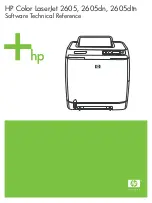
IBM-2007-04569-E-01
©2007 Sine Nomine Associates
8
4 Pricing and ROI
In his “z/VSE 4.1 Virtual Class” Klaus Goebel, the z/VSE Systems Manager, lists the five top
concerns of z/VSE customers as:
1.
Cost
2.
Cost
3.
Cost
4.
Applications
5.
Applications
Historically, people have run z/VSE because it's lean and mean as well as having a portfolio of
applications that facilitated doing business. Today's challenge is to maintain the platform’s
efficiency while integrating modern computing networks and applications.
IBM has attempted to address these top concerns by a three pronged attack:
1.
The introduction of MWLC Pricing.
2.
The z9 family of processors.
3.
A “Protect, Integrate, and Extend” strategy to software and inter-operability.
4.1 The Introduction of MWLC Pricing
Midrange Workload License Charges (MWLC) is a monthly license charge price metric on the
IBM System z9 Business Class (z9 BC) and the IBM System z9 Enterprise Class (z9 EC) servers
that applies to z/VSE V4 and 12 key VSE middleware programs. The exception is for the z9-BC
A01 which is subject to the zELC pricing mechanism.
Similar to Workload License Charges and Entry Workload License Charges, you may implement
MWLC in full-capacity or sub-capacity mode.
Ø
Full-Capacity: Programs are licensed and paid based on the IBM rated capacity of the z9
Server.
Ø
Sub-Capacity: Programs are licensed and paid for based on the utilization of the Logical
Partitions (LPARs) where the program executes. z/VSE may run under z/VM 5.2 or
higher.
4.1.1 What counts as Full-Capacity?
Full-Capacity pricing metric relies on the total rated capacity (measured in MSUs) of the machine
where a product executes.














































